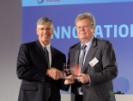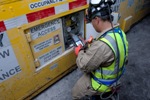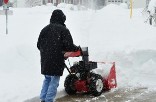
October 2012
- HEARING PROTECTION: Dispelling Hearing Protection Myths
- FOOT PROTECTION: Step Into Safety Right
- FALL PROTECTION: Higher Calling
- TRAINING: Mining the Value of Computer-Based Training
- WELLNESS: Better Together
- ERGONOMICS: Five Changing Trends in Managing Workplace Ergonomics
- LOCKOUT/TAGOUT: Educate, Train, and Visualize
- NSC PREVIEW: Congress Celebrates a Century
- INDUSTRIAL HYGIENE: Three Things Every Industrial Hygienist Should Know About Gas Monitoring
- INDUSTRIAL HYGIENE: Gas Monitoring Success Stories
- TRANSPORTATION SAFETY: Steering Clear of Driving Program Pitfalls
- INDOOR AIR QUALITY: IAQ Complaints: Survival Techniques for the Safety Professional
- OIL & GAS SAFETY: Radiation Sources in Natural Gas Well Activities
- FACILITY MANAGEMENT: 5S: The Unsung Hero of Operational and Safety Excellence
- FACILITY MANAGEMENT: Controlling Facility Noise with Curtain Walls
- WINTER HAZARDS: Plan Ahead to Prevent Slips and Falls
- MATERIALS HANDLING: Choosing the Perfect Work Access Lift
- DATIA SECTION: Drug Testing Promotes Workplace Safety
- DATIA SECTION: The Business Case for Workplace Alcohol Prevention
- IMA SECTION: Get in the Game: Applying Gamification to On-the-Job Safety
- IMA SECTION: Safety in Action: A Practical Application
- IMA SECTION: The Winding Staircase to Setting Up an Incentive Program
Click here to subscribe.
Cover Story
By Dave Francis
Every day, more than 500 people go to the hospital because of a ladder-related accident. Don’t be one of them.
Features
By Michael Levy
Winning bragging rights can be rewarding in and of itself, but if there’s a carrot being dangled, we become even more determined.
By Walt Rostykus, CPE, CIH, CSP
Traditionally, safety professionals have driven ergonomic improvements in an effort to reduce injuries, but all along they have been the wrong people to do this.

By Barry Knott
Workplace alcohol abuse need not be accepted as an inevitable cost of doing business.

By Melissa DiThomas
You can maintain your program effectiveness by understanding which drugs are being abused and modifying your testing panel based on that information.

By Sean Roark
There are many steps in implementing one for the workplace. Sometimes the last step is the hardest.
By Evelina Y. Stanley
With a subject as serious as this, it's worth repeating the old adage: Nobody plans to fail, but many fail to plan.
By Brittany L. Agro
Here's advice managers should follow (and not follow) when it comes to deciding on and purchasing appropriate footwear for their workforce.
By Linda J. Sherrard
Sometimes you cannot find a solution that works. Admit it and keep trying to find answers, but know that some complaints you may never be able to solve.
By Jonathan A. Jacobi, Bjorn Ansbro
21st-century regulations and a 21st-century workforce demand a blended approach.
By Stephen Jarman
Leadership teams that clearly link the target condition of a sustainable 5S process into the overall business strategy for operational excellence will make quantifiable financial gains.
By Henry J. Renken
Once you have completed your shopping list of work aids to place on the platform, you can begin to add up the total weight on board.
By Gayle Nicoll
More attention and monitoring of occupational radiation exposure in the natural gas industry are warranted.

By Terri L. Dougherty
Companies see advantages from linking safety and wellness.

Wireless gas detection is a cost-efficient way to improve safety.
By Danielle Gallo
Maintaining awareness is essential to maximizing your lockout program.

By Dave D. Wagner
Of course, workers cannot be properly protected from exposure hazards if they are not regularly using the monitors intended to detect the hazard.

By Jerry Laws
There are three ways to prevent them -– eliminating access, housekeeping, and improved traction -– but the first two aren't possible in all cases.

By Brad Witt
There is no surgery, no rehabilitation, no medication that returns a noise-induced hearing loss back to normal.
By Jerry Laws
NSC describes the Safety Trail in the central aisle of the expo as "a visual journey through corridors of safety milestones from the last century."
By Chuck Ashelin
If source sound levels increase for any reason, it is very simple to add a second layer of flexible sound curtain to an existing one or even to augment an existing rigid wall.
Departments
By Robert Pater
Provide consistent attention to the changes you want.
By Jerry Laws
In a crashless world, U.S. emergency rooms won't have to treat more than 2 million crash victims per year as they do now.
By Shawn M. Galloway
What one measurement would provide the greatest insight and facilitate performance and cultural transformation?